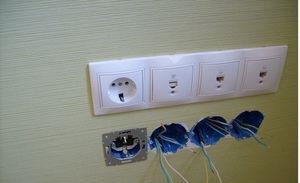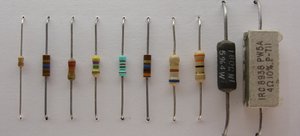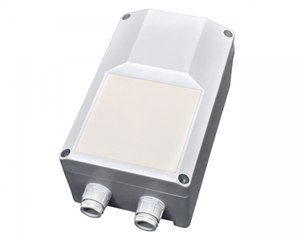How to connect the boiler to electricity with your own hands
Usually, boilers are installed for that, to heat the water to the required temperature, indoors, where it is absent, for household needs of everyday life, or for technical use. These devices are made mainly of the electric type. Such devices for water heating are mounted in different rooms:
- baths;
- kitchen;
- Toilets;
- and other rooms where hot water is required.
They have small dimensions, however, there are also large units on sale, it all depends, what volume of water the boiler contains. In this article we will tell you how to install and how to connect the boiler to electricity. This is how we describe what a RCD is, and why it is used on water heaters.
Application of water heaters
In addition to the usual function, some people install electric heaters for that, that they perform the function of heating. However, such cases are rare, the house should not have a complicated heating system, and the power of the unit itself must be at least on the mark 1 kw. Also, third-party equipment - a circulating pump - must be connected to the system, that it disperses water on the closed circle of heating system.
Basic installation work
- Attaching the water heater to the wall - the first thing you need to make a mark on the wall, to know where to drill and install the boiler mount. It is recommended to use a level when marking, after all, all fasteners must be located on the same level, as the skew of the unit can affect both performance, and on the holder, in both cases, the elements can quickly become unusable.
It is not necessary to be especially focused on scenery of walls, as at accurate mounting everything can be made smoothly, as a last resort, the boiler will hide all your carelessness during installation.
- Electrical work - after a secure fixation of the boiler on the wall, it should be connected to the mains and ensure its protection against short circuits and surges. There are two connection options:
- socket connection - boilers, which are connected to the socket should not be more powerful 3.5 kw. In these cases, you will need to plug into the device, or route the cable to the nearest outlet. For this case, cable cross section must be, at least, 3 mm. sq.;
- direct connection to the electrical panel - used for powerful devices more 3.5 kw. Since the outlet, in such cases, there is no possibility to apply, it simply can not withstand such a boiler power. Therefore the cable of bigger section is taken, and it is conducted directly to the electrical panel, to provide sufficient power, without fear of overload. It is important to know, that boilers power from 3.5 to 4 kW must be connected to a single-phase network. However, if the above value is exceeded, then the device is connected to a three-phase network, under voltage 380V.
Connection selection, as mentioned above, depends on the power of the device. After, as you have already decided how to connect the boiler to electricity, protective measures must be taken to ensure the reliability of the device.
- Installation of protection system - as the water heater works directly with water, it must be connected to the network through protection, to protect yourself, and nearby devices. The first thing you need to install the RCD on the boiler, and connect circuit breakers to the mains, leading to the device.
In case of power supply of the device from the socket, protective equipment must be installed on the switchboard. The units are connected via 220V mains, must pass through bipolar circuit breakers. When the connection is made directly, all the above elements must be as close as possible to the unit, to facilitate the maintenance of all equipment. However, with, it is also necessary to protect the ELVs themselves with a circuit breaker, since they will work in a humid environment, and for general safety, isolating them from the environment with special airtight boxes.
- After, how are you done with everything, it is necessary to check up once again integrity of wires and serviceability of the protective equipment. Only after a thorough check can you start the first start of the boiler. First of all it is necessary to open valves on contours of pipes (like cold water, and hot), and then start turning on the device. Then it will start to receive water, and when the required volume of fluid is collected there, the boiler will start to heat it, then you can use hot water through the taps.
Malfunctions of the RCD of the water heater
In some cases, manufacturers install RCDs for the water heater during assembly. This device is a small unit, which goes into the cut of the cable. Let's start with the decryption of the ELV - the device of protective shutdown, that it is intended to disconnect the device from the external electrical network, when the value of the differential current exceeds a certain value, the device is completely autonomous. This device is not similar to overcurrent protection equipment. The ELV works at "leaks" of current on a case component and wiring of the unit, and there is a shutdown.
The principle of operation of the ELV
Everything is quite simple to understand - when you turn on the water heater, the device passes current through it and compares its power with the output, and in case of detection of the difference of leakage in 30-35 milliamperes (the value depends on the device type, however, the standard is equal to - 30 mA), the machine opens the chain. ELV is designed to protect people from possible electric shocks.
Reasons, on which the RCD can work:
- human contact with parts of the body or elements, which can conduct electric current;
- timely human contact with the "earth";
- damaged wiring insulation and in contact of these parts with the housing;
- when replacing the neutral cable and ground conductor;
- when the neutral conductor breaks and a person comes into contact with the body and "ground" at the same time.
When you use the boiler together with the ELV, perhaps, noticed, that this device works very often, this can be explained by two things:
- the device is faulty. Such things are quite common and quickly become unusable, however, everything depends on the quality of production, So, example, Boiler manufacturer Termex uses low-quality ELVs;
- another reason for knocking out the ELV may be the replacement of the ground to the neutral conductor. This is due to the use of "zero" - a combination of neutral and ground cable. The device does not accept this grounding and often turns off the water heater.
It is recommended to carry out preventive work at least once every two months, to make sure that the device works.
It is almost impossible to repair a RCD, since it has a complex structure. Often you just have to replace it with a new one, the part must be changed to the original, as from other system there can be conflicts.
Basic rules when connecting the boiler to the mains
In order not to endanger yourself and install protective equipment yourself, the following safety rules must be observed:
- switch off the power supply before starting work, to calmly carry out all installation measures;
- all wires must be connected to each other by soldering;
- it is necessary to take care of the protection of the RCD, circuit breakers and grounding;
- in this regard, that the equipment operates in a humid environment, care must be taken to protect wiring and sockets, to protect them from contact with moisture;
- fasteners must be installed correctly, the minimum diameter of one anchor hook is not less 8 millimeters, as the volume of one such boiler can be more 100 liters. It is strictly forbidden to install these water heaters on drywall. In the case of, if you still need it, it is best to install a floor-standing device.
Conclusion
We told you, how to connect the boiler to electricity and protect it from various voltage drops, and short circuits. If, if you are not confident in your abilities, it is recommended to call a wizard, which will help you do all the installation work.



